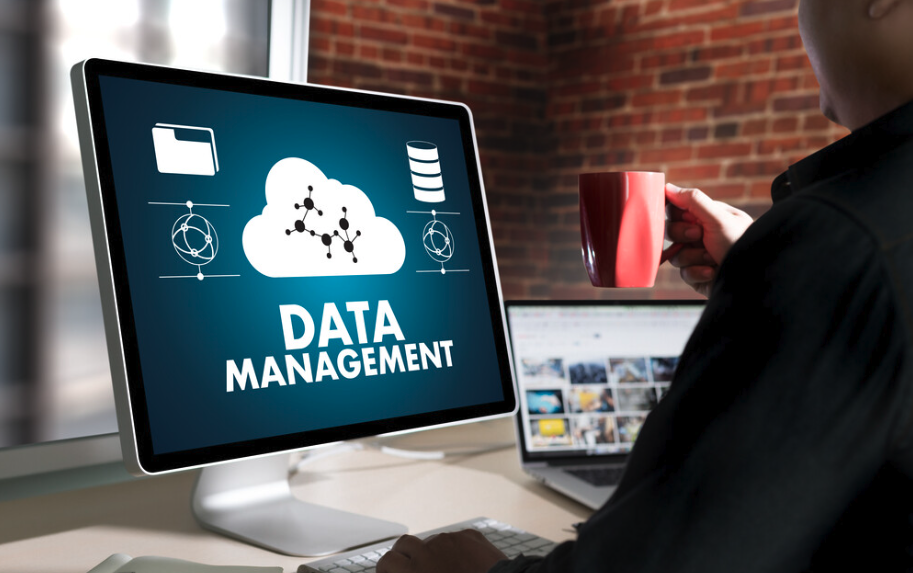For small businesses, managing data is a pivotal aspect that directly influences efficiency, decision-making, and overall success. But how to manage data for a small business?
We’ve all heard this before, but an effective data management process enables small businesses to harness the vast quantities of data they generate in a structured, useful manner.
This not only aids in identifying trends and insights for better business strategies but significantly enhances productivity and customer relations by ensuring data accuracy and reliability.
Companies must prioritize processes that ensure data integrity and usability to manage data effectively.
Yes, this data management thing sounds complicated and requires hard work. So, we searched the internet and saw some essential tips for small businesses managing data.
Which is why let’s unpack the nuances of managing data for small businesses and present it step by step to meet your needs.
Importance of Data Management
Effective data management for small businesses is not merely about handling vast amounts of data but about transforming this data into a strategic asset that drives growth, innovation, and competitive advantage.
By addressing the technical, operational, and cultural aspects of data management, small businesses can navigate the complexities of the digital age more effectively, ensuring their long-term success and sustainability.
Proper data management enables small businesses to make informed decisions, streamline operations, enhance customer relations, and comply with regulatory requirements.
The International Chamber of Commerce (ICC), in collaboration with the University of Vienna, underscores the importance of data in driving global trade and productivity, advocating for small businesses to adopt good data management practices to leverage data for innovation and growth.
This approach is especially critical as micro-, small-, and medium-sized enterprises (MSMEs) form the backbone of global economies, constituting significant employment and business activity worldwide.
How to Manage Data for SMEs
The following strategy helps small and midsize businesses use data to improve decision-making, increase efficiency, and secure information.
Assessing Data Needs
Assessing data needs involves a detailed evaluation of the data types that are relevant and necessary for the business’s operations, decision-making, and strategic planning.
This process helps SMEs focus on collecting, processing, and analyzing data that provide the most value.
Understanding data requirements not only supports better business decisions but also aids in achieving compliance with regulations, improving risk management, and enhancing data security measures’ overall efficiency and effectiveness.
The significance of understanding data requirements lays the foundation for a robust data management strategy.
It ensures that SMEs can make informed decisions, streamline operations, improve customer experiences, and reduce costs.
Moreover, a structured approach to data management supports compliance with industry regulations, an aspect that’s becoming increasingly important in today’s digital landscape.
Furthermore, adopting data analytics is becoming essential for SMEs looking to stay competitive and harness the potential of their data.
Despite a reported lag in adopting data analytics solutions among SMEs, there’s a growing openness to understanding and leveraging these tools for business benefit.
Data analytics enables SMEs to derive actionable insights from their data, guiding strategic decisions and operational improvements.
By moving towards a data-centric model, SMEs can realize significant financial advantages, increase their agility in the market, and eliminate data silos within the organization.
Standardization of the data entry
Improve the quality and consistency of their data, leading to better decision-making, improved customer satisfaction, and operational efficiencies.
Standardizing data entries is not just about maintaining order; it’s about laying a solid foundation for data-driven growth and innovation.
First thing first is crafting a robust data management policy as the foundation for standardized data entries across the organization.
This critical step paves the way for templates and forms designed to capture data consistently.
As part of this seamless progression, data validation rules refine the data entry process, ensuring that the data collected adheres to the specified quality and format criteria, thereby minimizing errors and enhancing data integrity.
The role of training must be balanced in this context; educating the team on the nuances of the data management policy and the correct use of templates and forms is essential for the successful standardization of data entries.
Then, tools such as Microsoft Excel, Google Forms, and CRM systems like Salesforce and Zoho CRM offer robust features, including data validation, customizable fields, and templates, effectively supporting the standardization efforts.
The dynamic nature of business necessitates a regular review and updating of data standards and management policies to ensure they remain relevant and effective in meeting the organization’s evolving needs.
This iterative process ensures that SMEs can continue to rely on their data management system to provide accurate, consistent, and reliable data.
Best Practices for Data Security
Infosecurity Magazine reports a study by the Identity Theft Resource Center to show us how important data security is.
This study revealed that 73% of U.S.-based SMEs were impacted by a data breach in 2023, highlighting the critical need for robust cybersecurity measures.
Despite the high rate of breach preparedness (85%), less than half of the surveyed SMEs adopted cybersecurity best practices such as multifactor authentication and mandatory password strength.
Therefore, implementing best practices for data security involves a comprehensive approach that includes employee training, regular audits, and adopting efficient cybersecurity solutions.
Training employees on data security best practices is essential to minimize risks associated with human error, such as falling victim to phishing attacks.
Additionally, conducting regular audits and assessments is crucial for identifying vulnerabilities, ensuring compliance with evolving regulations, and improving risk management.
This proactive approach allows SMEs to address potential security gaps and strengthen their overall security posture.
Despite the challenges, the cybersecurity market for SMEs remains underserved, presenting opportunities for cybersecurity providers to cater to this segment’s specific needs.
The 2021 McKinsey’s research suggests that the cybersecurity needs of SMEs are diverse, requiring tailored strategies and solutions to address their unique challenges.
By applying more efficient direct remote-selling strategies and revising channel strategies, cybersecurity providers can capture growth in the managed security service provider (MSSP) segment and offer SMEs simpler, integrated security solutions that reduce complexity and cost.
Data Backup Strategies
The Veeam Data Protection Trends Report 2024 surveyed 1,200 IT leaders, revealing crucial insights for SMEs on data backup strategies.
The report highlights the ongoing shift towards cloud-hosted data protection and the increasing concern over ransomware attacks.
The report also underscores SMEs’ need to adopt robust data backup and recovery solutions to ensure resilience against cyber threats and operational disruptions.
It emphasizes reliability, integration with cybersecurity tools, and the protection of both on-premises and cloud-hosted workloads as key drivers for upgrading data protection strategies.
So, effective data backup procedures ensure business continuity, minimize downtime, and protect sensitive information.
To implement efficient data backup strategies, SMEs should:
- Assess critical data: Identify what data is crucial in business operations and requires backing up.
- Adopt the 3-2-1 backup rule: Maintain three copies of data on two different media, with one stored offsite for disaster recovery.
- Automate backup processes: Automate backup solutions to ensure data is backed up regularly without manual intervention.
- Secure backup data: Encrypt backup data to protect it from unauthorized access, especially if stored offsite or in the cloud.
- Regularly test backups: Periodically test backup copies to ensure data can be restored accurately and within an acceptable recovery time.

Training Employees on Data Management
Training equips staff with the knowledge and skills to handle data responsibly, ensuring it is secure and utilized effectively.
This process begins with understanding the importance of data to the business, recognizing the various types of data the company collects, and identifying employees’ roles in data management.
The first step is to establish clear policies on data handling, including data entry, storage, and sharing protocols.
Employees should be familiar with these guidelines to prevent data breaches and ensure data integrity.
Next, introduce practical training sessions that cover the tools and software the business uses for data management.
This hands-on approach helps employees gain confidence in using these tools effectively.
Regular updates and refresher courses are essential to keep pace with evolving data management practices and technologies.
Moreover, fostering a culture that values data security and effective management can motivate employees to take their training seriously.
For resources and recommendations, small businesses can explore online courses from platforms like Coursera or LinkedIn Learning, which offer a range of programs tailored to different aspects of data management.
Additionally, engaging a professional in data management to conduct workshops or seminars can provide personalized guidance tailored to the business’s specific needs.
Data Visualization and ETL
Through data visualization, companies can see complex data in an intuitive, graphical format, making it easier to identify trends, patterns, and outliers.
ETL processes ensure that data is reliable and ready for analysis. By leveraging these tools, small businesses can make informed decisions, optimize operations, and enhance customer experiences, ultimately leading to growth and success.
These processes are pivotal for turning raw data from various sources into clear, actionable insights.
Hence, we offer services to address these needs, extracting data from disparate APIs, cleansing, validating, and enriching it for accuracy before transforming it into visual insights for informed decision-making.
The Nexalab Data Visualization and ETL approach includes creating interactive dashboards, integrating data, and automating ETL workflows tailored to business requirements.
With these tools, your business can make informed decisions, optimize operations, and improve customer experiences with real-time insights, ultimately leading to growth and success.
Conclusion
The key takeaway is SMEs should focus on comprehensive data management to manage data effectively, from assessing data needs to ensuring robust data security and implementing regular backup strategies.
Training in data management plays a pivotal role in enhancing employees’ ability to handle data securely and efficiently.
At Nexalab, we are committed to providing top-notch services that cater specifically to the unique needs of small businesses in Australia.
Ever heard of us? We’re like the friend you call when you need to navigate the complexities of the digital age.
Have you ever felt intimidated by the sheer volume of data and wished you could see the story it’s trying to tell?
That’s where our prowess in data visualization and ETL (Extract, Transform, Load) processes comes into play.
Yes, you can transform complex datasets into clear, actionable insights. Just with Nexalab Data Visualization and ETL.
But our toolbox extends beyond that. Ever considered how SharePoint Programming or Security Hardening could elevate your business?
It’s not just about managing data but making it work for you securely and efficiently.
So, how to manage data for a small business? Start partnering with us to receive advanced, step-by-step data management.




